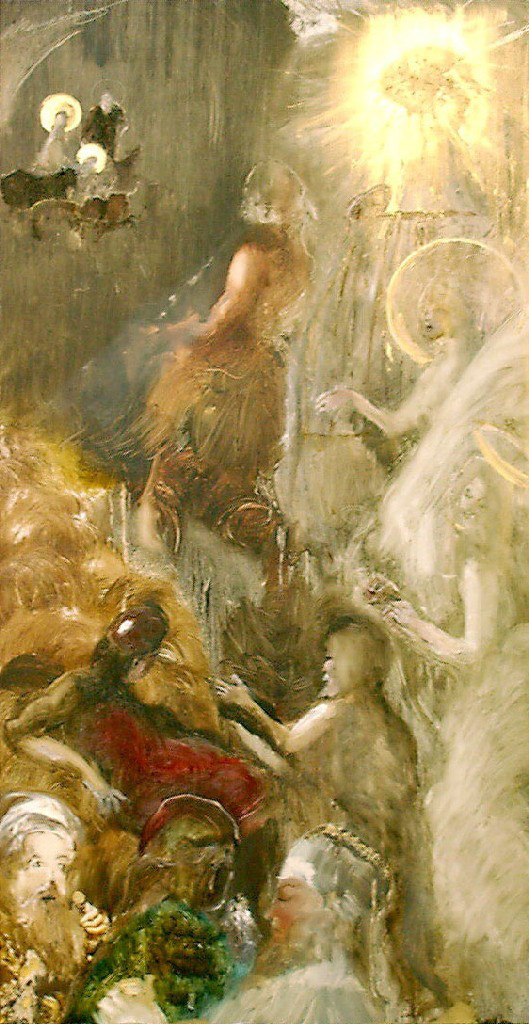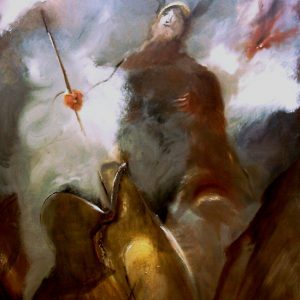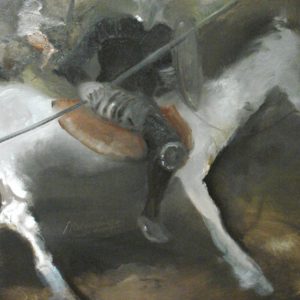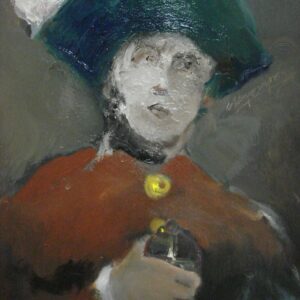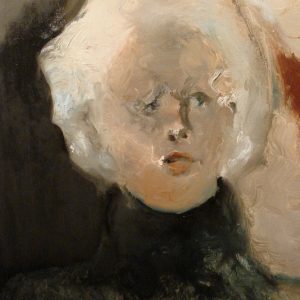Description
Artist/Maker: Kostas Kampouropoulos (1939-2018)
Object/Materials and Techniques: Oil on Laminated Wood
Date: Painted between 2007-2016
Dimensions: H. 50 cm. x W. 27 cm.
Art style: Romantic Visionism / Abstract Expressionism / Minimalism
Current Location: Private collection
Curator’s note: Inspired by the Bible’s most significant recite regarding the Christmas Day, Kostas Kampouropoulo,s in this painting, captured exquisitely the majesty of the season.
A famous episode of the Nativity of Jesus is depicted, formally known as the Annunciation or Appearing to the Shepherds, described in the Bible in the second chapter of the Gospel of Luke where a custody of Angels appears to a group of Shepherds, and tells them about the birth of the Lord. Until today it consists a common subject of Christendom, including Christian art and Christmas carols.
Through an opposite perspective and a relatively uncommon approach, the artist instead of placing the two groups, Angels and Shepherds, in conspicuous different sides, he chooses to merge them through his exceptional and very characteristic freedom to abstract the subjects.
Therefore, he succeeds in interpretating powerfully the message that the biblical episode mainly reflects regarding the peace promised to people/Shepherds on earth by the Angels; the peace as an inner status resultant from their reconciliation with the Messiah, ‘from Heaven’s all gracious King’. In the prospect of this joint faith and perpetual peace, Kostas Kampouropoulos allegorically brings into consonance Shepherds and Kings, perceiving all the Christians as an entity.
The main theme of the painting narrowly starts from the manger in the background along with Virgin Mary and Joseph, and spreads to the star, the Three Magi and the shepherds. The animals humbly make a small circle around the divine family while the whole composition is framed by the dances of the angels. Although the manger lies at the back part of the scene it is surely not an indistinguishable detail but the most prominent element around which the whole holly episode unfolds.
The arrival of the Three Magi is shown at the front end of the canvas, the shepherds in the centre (Three Magi, three shepherds) whereas on the right the angels/musicians are depicted gilding and glittering.
Furthermore, in order for the aforementioned amalgamate to be emphasized, the two Magi -the third one in the middle is not visible- look like lay people and rather well-to-do villagers whilst, correspondingly, one of the shepherds is wearing a purple robe and helmet.
Yet, the overall composition seems to recall Virgin Mary’s words in the Magnificat: ‘He has brought down rulers from their thrones but has lifted up the humble.’ The fact that the divine message was given primarily to the Shepherds who were located on the lower rungs of the social ladder is generally considered the most semantic element, contrasting with the powerful characters of the time, such as the Emperor Augustus. And above all there is this Glory to the New-born Jesus, for delivering the annunciation of peace and good will on earth, that is glowing and goldens in the whole nocturnal scene.
Capitalizing on the atmospheric effect of the bright God-gifted light, the artist masterfully uses a broad palette of gold. The golden light that diffuses in the painting gives the impression that comes from a star that has permanently lost its shape, and reminds a lot of the sunlight which usually nestles a fiery element in its centre. Someone would say that there is a circumstantial implication by the artist to The Holy Spirit that lights up everything within the form of gilded Light, on the upper right side of the canvas, seeking, in that respect, to strongly underscore the encounter with the Divine, and further convey ‘the reality of the unseen’.
The painting constitutes one of Kostas Kampouropoulos masterpieces, and puts forth the artist’s characteristic calibre of mixing elements that are mutually exclusive and largely incoherent but altogether as a whole present a remarkably general homogeneity plus colour coherence.
To be noted that the artist himself underlines: ‘there is no intention of either hagiography or Western-inspired composition.’
Curator’s highlight detail: Despite the abstract structures of the composition, the viewer may clearly detect a dog included among the Shepherds (down left) and, moreover,
the surprised faces of the Shepherd figures, due to the appearance of the Angels and the Glory of the Lord shone around them.

